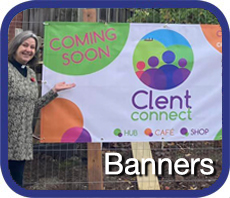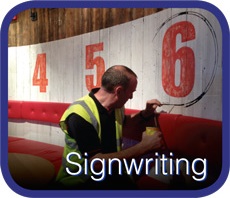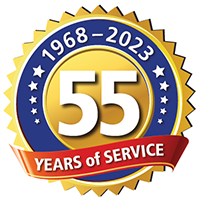Is there a difference between sign making and sign writing?
We can’t be accurate about the introduction of signs to civilisation, but evidence suggests that they were around in ancient Roman times. Examples have been uncovered in the ruins of Pompeii advertising gladiatorial games and forthcoming elections.
Carved inscriptions from this era (known as Roman Square Capitals or Trajan) were created with calligraphic brush strokes by master sign writers painting on marble – the letterforms were then made permanent by the chiselling process.

Painted signs, as we know them, displayed pictures or symbols because few people could read. As cities expanded, tradesmen used pictorial signs to identify their houses and these became the principal means of navigation.
In England, lettering on signs did not become commonplace until the 18th century when literacy rates increased. The development of the craft of sign writing was effectively complete by the start of the Victorian era.
For the next hundred years, there were painted signs everywhere, and the demand for sign writers was huge. Some learned as apprentices or family members, some were trained formally in a trade school, and others simply taught themselves. They would work on shops, pubs and narrow boats, on factories and hoardings; government departments and the military employed some sign writers, full-time, both at home and abroad.
Sign making, on the other hand, is a 21st Century innovation. The demand for new and creative ways of advertising commercial, business and retail premises led to the development of acrylic signs, vinyl signs, printed signs, neon signs and digital displays, all produced on an enormous scale with modern machinery.
J. Connor Signs are both sign makers and sign writers – a rare combination. Established in 1968, the business is still a family run concern with traditional values and skills, using the latest digital manufacturing processes to create intricate illuminated signage or eye-catching vehicle graphics and of course traditionally handcrafted signs.







